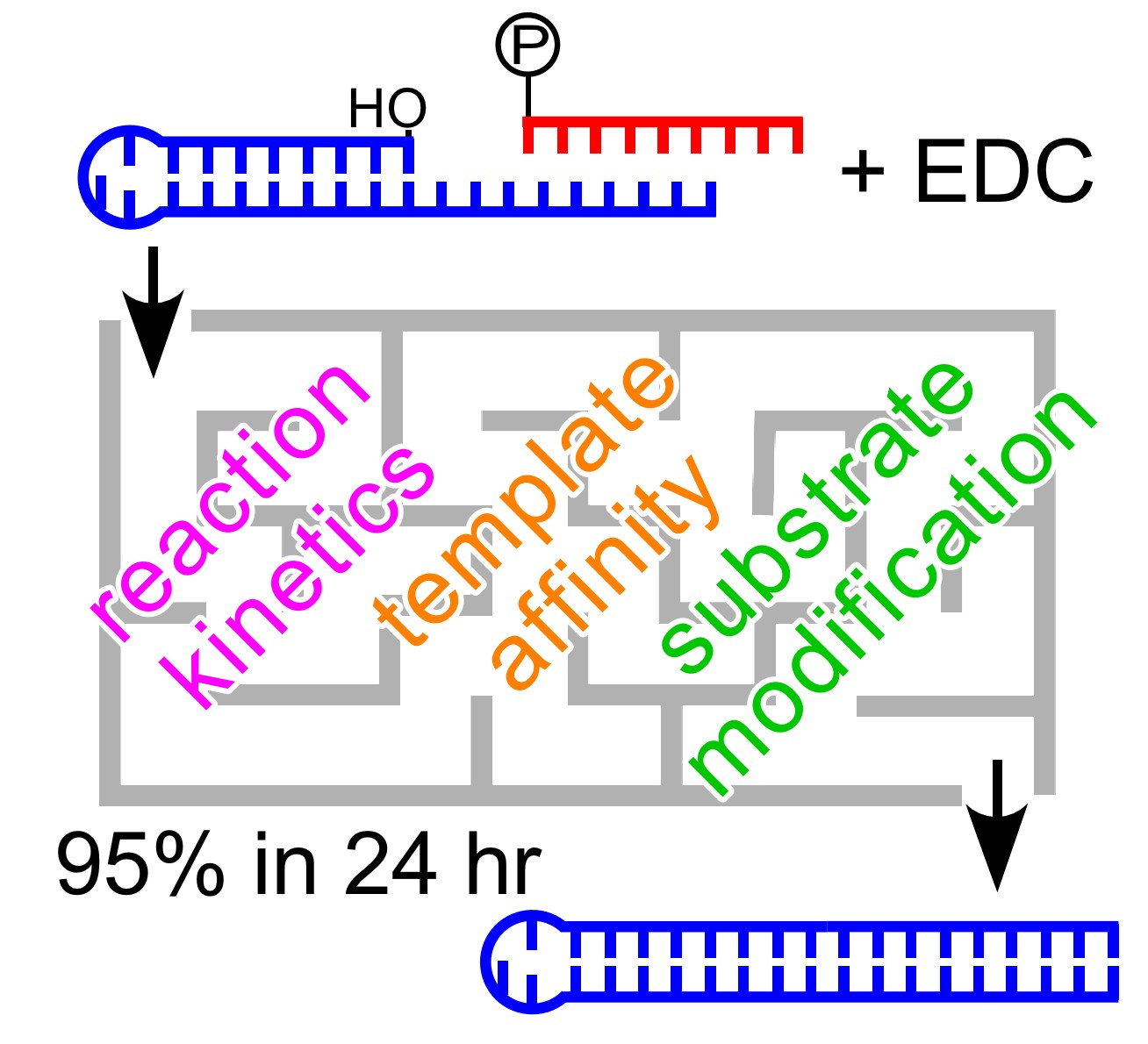| Title | Comparison of multiple factors that impact the efficiency of non‐enzymatic DNA ligation: Key parameters for maximizing ligation rates and yields with carbodiimide activation |
| Publication Type | Journal Article |
| Year of Publication | 2020 |
| Authors | Obianyor, C, Newnam, G, Clifton, B, Grover, M, Hud, NV |
| Journal | ChemBioChem |
| Volume | 21 |
| Issue | 23 |
| Pagination | 3359-3370 |
| Date Published | Nov-07-2021 |
| ISSN | 1439-4227 |
| Abstract | Chemical ligation is an important tool for the generation of synthetic DNA structures, which are used for a wide range of applications. Surprisingly, reported chemical ligation yields can range from 30 to 95^% for the same chemical activating agent and comparable DNA structures. We report a systematic study of DNA ligation by using a well-defined bimolecular test system and a water-soluble carbodiimide (EDC) as a phosphate-activating agent. Our results emphasize the interplay between template-substrate complex stability and the rates of the chemical steps of ligation, with 3' phosphate substrates providing yields near 100^% after 24^^hours for particularly favorable reaction conditions. Ligation rates are also shown to be sensitive to the identity of the base pairs flanking a nick site, with as much as threefold variation. Finally, the observation that DNA substrates are modified by EDC at rates that can be comparable with ligation rates emphasizes the importance of considering side reactions when designing protocols to maximize ligation yields. |
| URL | https://onlinelibrary.wiley.com/doi/pdf/10.1002/cbic.202000335 |
| DOI | 10.1002/cbic.202000335 |
| Short Title | ChemBioChem |

